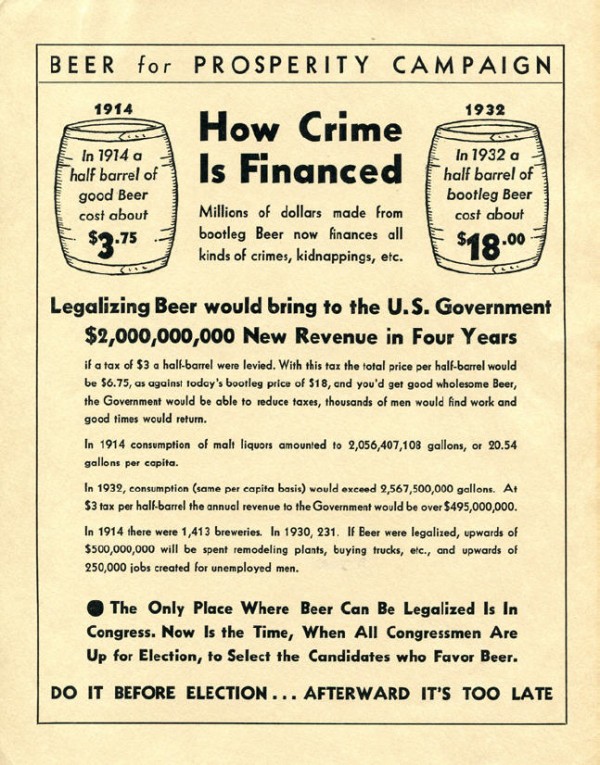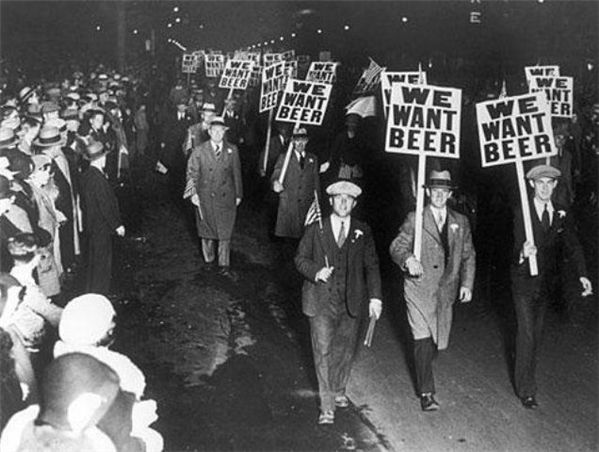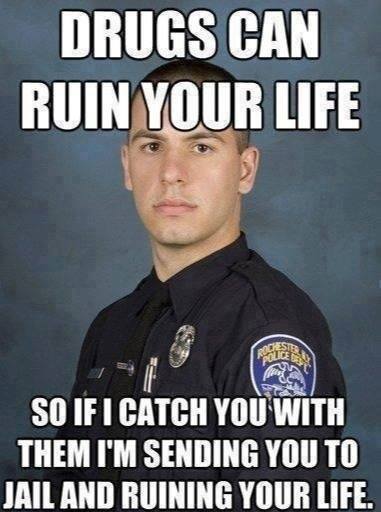Righteous Law Enforcers want to end the War on Drugs.
Protect and Serve.
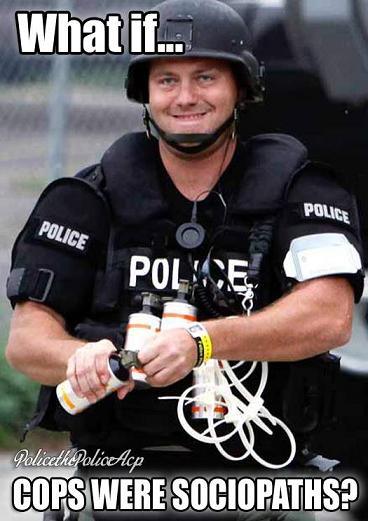
Please watch this video below….
When The Government write Bad Laws….. When Police ranks are peopled with Violent Thugs…. the wheels fall off Civil society and terror and chaos reign.
Why have faith in society when this sort of Evil is endemic to the system?
Why not join a violent gang… they are right… society is no better!
And guess what Sheeple…. you are just as guilty as these thugs because you have created this system…. yo have voted for it… you have done nothing said nothing against these outrages.
In fact most of you have said the Breakdown in Social order require even *heavier* response!
Every time you vote for politicians who campaign on ‘Zero tolerance’…. calling for greater police powers and the curtailing of individual rights and Just due process… you get blood on your hands.
The second amendment of the American constitution in particular was expressly written so that citizens can defend themselves from this sort of wicked State powers…. and of course the Socialists around the globe are working to disarm their populations and render citizens defenceless against their Brutal Government apperarti.
The current politically correct flow of western civilisation is in free fall towards Chaos and tyranny.
*Only the Libertarians* are working to stop this rot…. yet the Mainstream Media suppress this honourable movement and keep the sheeple in the dark.
We Libertarians are not anarchists.
We believe there is a legitimate roll for the Government and police… yet we must be Eternally Vigilant… and always ready to rise up when they overstep their just bounds and become the enemies of the people they are employed to serve.
I myself have plenty to say about how we can reform this culture of brutality and tyranny within the Police and re-establish them as the truly honourable profession the ought to be.
Will we get this chance?
Probably not.
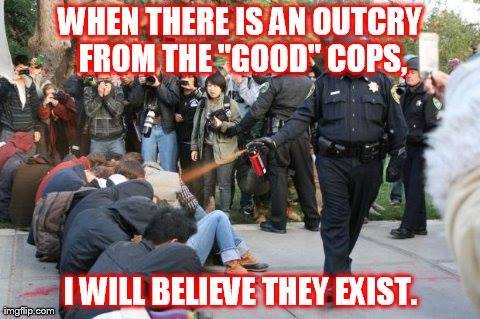
It’s scary to realise that the way things are going voices like mine could be criminalised and silenced.
The powers that be are trying to gain control over the internet and pass laws which restrict free speech.
They will ‘make examples’ of some of us to instil terror against protest and dissent.
The Nazi Dictum…. “Ping a few, and the rest will fall into line…”
Tim Wikiriwhi
Christian Libertarian.
Read more from me on these topics….
Police Brutality in ‘God’s Own’
Filthy Bastards: “It was an Accident”. Kim Dotcom Raid.
Time to Choose…. Storm Clouds Gathering. God given Rights vs Tyranny
Virtual President for President! The Ugly Truth about Gun Control.
God hates fags? God hates us all!
Fred Phelps thought that fags were special. They’re not.
Fags think that fags are special. They’re not.
None of us is special.
We all sin differently. Schadenfreude is a sin. (It’s a form of vengeance. “Schadenfreude is mine; I will laugh, saith the Lord.” Perhaps Fred Phelps got that bit right.)
You people are fucked in the head for rejoicing in another human beings death, no matter how much of a cunt he was.
Fred Phelps has died! Let’s spread a little hate worldwide! No, wait … let’s not do that.
Slayer To Protest Westboro Baptist Church Leader Fred Phelps’ Funeral
Let’s picket his funeral instead!
I’d rather see them play a set out front than picket it!
Me too, bro. But I suspect that news article’s a hoax, anyway. So let’s have another ridiculously over-the-top Slayer fan video instead. 🙂
Just a note on Slayer. Slayer’s lyrics are sometimes anti-Christian, due in large part to the fact that guitarist Kerry King is a notorious atheist douche-bag. Notwithstanding that some heavy metal bands (whom I won’t name) are genuinely anti-Christian, Slayer is not really an anti-Christian band. Art is art. It’s just an image thing.
It’s not that these people believe in this stuff. It’s just … a cool imagery that goes along with the music …
Slayer is just a bunch of guys having fun. Metal is fun! Keep it metal!
God loves us all. As vocalist Tom Araya makes clear, “He doesn’t … God doesn’t hate.”
God loves us all. He loves fags, Fred Phelps, Slayer, the Schadenfreuders … and you. Repent!
Repent now and accept God’s gift of eternal life.
RIP Fred Phelps. (Goodbye and thanks for all the good excuses to post more Slayer.)
NEED A PERMIT TO HELP THE POOR? Nazi Hamilton Council Bastards!
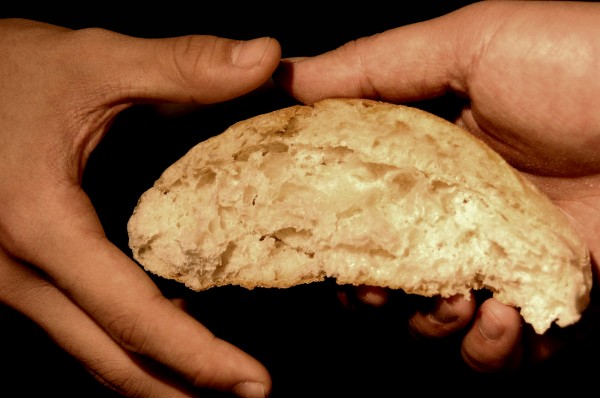
Waikato Times reports…. “A group feeding Hamilton’s needy say the council is forcing them out of Garden Place to stop more homeless people coming to the area. But the council says while they have received complaints about the group feeding the homeless, their primary concern is the fact that those involved don’t have the appropriate permit to operate in a public.”
Read on here..
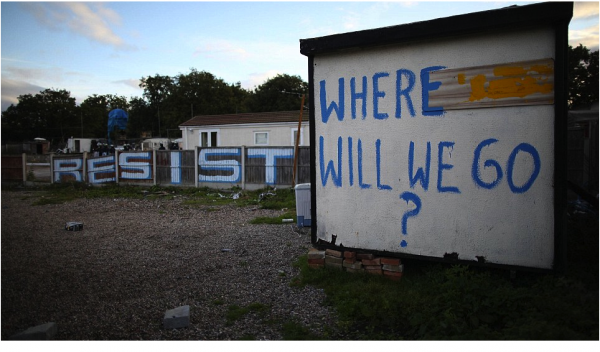
Of course it’s not just the council… Hamilton CBD seems to be infested with Mean spirited whinney Bitches who complain about everything.
They bleated on about ‘Rif Raff’ frequenting the Legal high outlets etc etc…. making all sorts of wild allegations… etc Ad Nauseam… and the Council was more than willing to use this as a pretext to write even more unjust laws… and generate even more prohibitions.
They tried to stop the Casino being built.

What good is having a public domain if only the Wealthy can use it?
Socialism cares for the weak? YEAH RIGHT!
And you wonder why nobody’s doing business in Town?
Me thinks it has more to do with the Blamers and Ban-ers rather than those they oppress.
The Pompous arses spend all day kicking people out of the city and then wonder why they are going broke?
Morons blame others for their own Nastiness and stupidity.
The reality is none of these activities ought to be criminalised, I almost hope a giant sink hole would open up and swallow the whole CBD…. esp Council HQ.
What a hole it has become.
When benevolent Citizens show compassion for their fellow man the Socialist infested Council makes it illegal!
If I was Mayor I would tell all these small minded fascists to ether shut their traps… or shut their shops and Bugger off somewhere else! And allow more tolerant others to use the city.
Hamilton CBD needs more freedom, less Government.
Life before Suffocating Nanny State Bubble wrap.
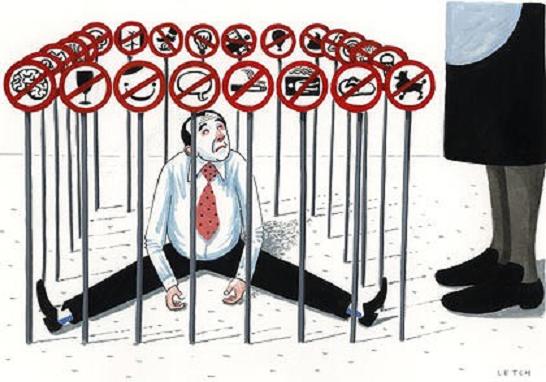
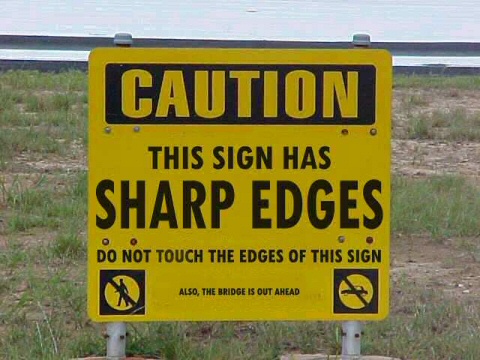
Submission to the PSRA
To: psychoactives@moh.govt.nz
Subject: Regulations Consultation
The Aotearoa Legalise Cannabis Party exists to legalise cannabis for recreational, spiritual, medicinal and industrial purposes; to empower people to work together for peace and true justice; and to institute a proper and just balance between the power of the state and the rights and dignity of the individual.
Psychoactive substances regulations exists to give government some measure of control over what substances people use, how they use them, and who uses them.
Cannabis is not regulated. It is prohibited. Paradoxically, in the case of cannabis, prohibition means that cannabis is almost entirely uncontrolled. Nearly everyone who wants to use cannabis does so, including minors. For minors, cannabis is as readily available as alcohol.
Ostensibly, the purpose of cannabis prohibition is harm reduction. The three pillars of harm reduction are supply control, demand reduction and problem limitation. Under prohibition, there is no control of supply of, no reduction in demand for, and no limitation of problems caused by, cannabis.
Government must regulate cannabis if it is to gain any measure of control over who uses cannabis. Regulation is de facto legalisation. For the government and for the cannabis law reform movement, a regulated, taxable market in cannabis is win-win.
Various parties, including the Associate Minister of Health himself, have suggested that substances currently controlled (or not, in the case of cannabis) under the Misuse of Drugs Act might, in future, be controlled under the Psychoactive Substances Act. A simple legislative amendment to the Misuse of Drugs Act removing cannabis from its schedules would immediately bring cannabis under the Psychoactive Substances Act, where its risk of harm could then be assessed against the same standards as will apply to any other psychoactive substance.
There is more than one way to skin a dead cat, and this is not the Aotearoa Legalise Cannabis Party’s preferred pathway to cannabis law reform. However, the Party makes the present submission on the assumption that the future pathway to legal cannabis will be as has just been suggested.
Cannabis is not a substance, nor is it a product. It is a plant, a plant that anyone with a green thumb can grow. Therefore, many of the consultation questions in the supplied consultation document are inapplicable to cannabis. Since we do not have to answer all the questions, we answer only those questions we deem to be relevant.
Our main concerns are “truth in labelling” and appropriate measures to minimise access to cannabis by minors. Hence, the questions we answer below are mainly those concerning labelling and packaging (in Chapter 4 of the consultation document), and place of sale and advertising (in Chapter 5).
14. Are the proposed requirements and restrictions on labelling sufficient?
Yes.
15. Are the proposed requirements relating to health warnings sufficient?
Yes.
16. Are the proposed packaging requirements and restrictions sufficient?
Yes.
17. Do you agree with the proposal to restrict a packet to one dose? Please give reasons for your answer.
No. There is no need to restrict the size of a packet of cannabis. Because no one has ever overdosed on cannabis in all of human history. If there must be restriction, the size of a packet of cannabis should be restricted to 1 oz. There is no need for decimalisation.
18. Do you agree with the proposal that a dose, in whatever form the product takes, is split wherever possible?
No. Consumers can do this themselves with scissors or grinders.
19. Do you think there should be restrictions on the form products can take? If so, what forms do you think should and shouldn’t be allowed?
No. Cannabis should be allowed in smokeable, vaporisable, topical and edible forms.
20. Do you think there should be restrictions or requirements on the storage of psychoactive substances? If so, what should the restrictions or requirements be?
See below. (As previously noted, cannabis is neither a substance nor a product. It is a plant, but can be made into a value-added product.
21. Do you think restrictions or requirements should be set for the storage of approved products? If so, what should they be?
Yes. For security purposes, to prevent cannabis from falling into the hands of minors or of thieves who might on-sell to minors, cannabis retailers should store cannabis products under lock and key when not physically present on the retail premises.
22. Do you think restrictions or requirements should be set regarding the display of approved products? If so, what should they be?
Yes. We suggest that such restrictions or set requirements be in line with those applicable to other psychoactive products. Additionally open discussion around public health best practices such as plain packaging must occur, in the context of whatever is publicly acceptable for tobacco and alcohol should also be acceptable for cannabis.
23. Do you think restrictions or requirements should be set regarding the disposal of approved products? If so, what should they be?
Up in smoke. Persons disposing of cannabis must ensure that there are no minors or non-consenting adults downwind of the conflagration.
24. Do you think there should be signage requirements in the regulations? If so, please give specific suggestions.
There should be no signage requirements, but we recommend a stylised cannabis leaf.
25. Do you think the regulations should specify further places where approved products may not be sold? If so, please provide specific suggestions.
We have no special objections to regulations preventing the sale of cannabis near schools or other places where minors might otherwise tend to congregate.
26. Do you think the regulations should prescribe restrictions or requirements for advertisements of approved products? If so, please provide specific suggestions.
We have no special objections to the regulations that currently apply to advertisements for synthetic cannabinoid products also applying to advertisements for cannabis.
27. Do you think the regulations should prescribe restrictions or requirements on internet sales of approved products? If so, please provide specific suggestions.
We have no special objections to the restrictions and requirements that currently apply to Internet sales of synthetic cannabinoid products also applying to Internet sales of cannabis.
28. Do you think the regulations should prescribe restrictions or requirements on the advertising of approved products? If so, please provide specific suggestions.
We have no special objections to the restrictions and requirements that currently apply to the on-site advertising of cannabinoid products also applying to the on-site advertising of cannabis.
In closing, a few words about the fees and levies proposed (in Chapter 6 of the consultation document) and also on determining the risk of harm posed by cannabis.
The ALCP envisages that many commercial suppliers of legal cannabis will be small scale suppliers. The suggested fees and levies in the consultation document would be harshly punitive in the context of “cottage industry” cannabis. They would provide a major disincentive to comply with the regulations, and drive the cultivation and supply of cannabis underground, where it now is, uncontrolled by the government. We suggest that the PSRA sets the fees or levies payable by homegrown commercial cannabis suppliers commensurate with those set by authorities in the State of Colorado.
Cannabis has been tried and tested over several millennia. Risk of harm has already been determined. We know that cannabis poses no more than a very low risk of harm to those who choose to use it.
This submission was completed by Dr. Richard Goode, Vice President of the Aotearoa Legalise Cannabis Party, on its behalf.
Hightimes. Biologist Explains How THC Kills Cancer Cells.
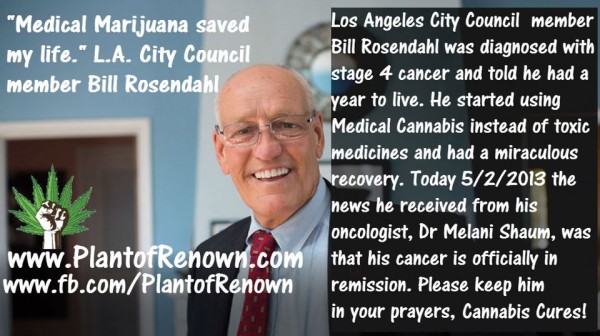
Got this Video (below) from Hightimes
A very interesting explanation about the progressive understanding of THc’s Anti-cancer properties.
She particularly mentions Neuroblastoma… brain cancer.
Dr. Christina Sanchez from Cannabis Planet on Vimeo.
Update…. 4-4-14
New Video below…
Read more about the advances of Medical science and the healing power of Cannabis.
Medical Cannabis. Wonder Drug! Halts Epileptic Seizures in Children! PTSD. Etc etc.
CBD Oil is Saving My Daughter’s Life
Marijuana stops child’s severe seizures
Charlotte Figi’s Story Brings Families to Colorado for Her Medical Marijuana Strain
American Christians using medical cannabis to save their Children’s Lives. Epilepsy .Self help (4)
Medical Cannabis Halts life-Threatening Fit’s and Seizures in Children! Self Help (3).
Newly detected Gravitational ripples prove once again that Biblical Creationism is a scientifically sound belief… not the bogus Atheist Materialist Multi-verse theory.

In a carefully orchestrated ‘announcement’ ‘Big Bang Breakthrough’…about the detection of ‘Gravitational Ripples’ The Materialist PR engines were quick to attempt to ‘channel’ the sheeples minds away from the obvious implications of this new ‘discovery’ which again proves the Universe is finite in every sense of the word… the now well established fact that our universe had a beginning… exactly as the Bible always said… towards instead accepting their fictitious fabrications designed specifically to lull the unwary and unwilling… into a false sense of the validity of atheism.
Reading about this in an article in today’s NZ herald…
“If cosmic inflation, which we need in order to explain several weird facts about our universe, is correct, then this provides strong support for the notion of the “multi-verse”; the idea that what we see when we look up at the night sky is but a gnat on the back of the elephant that is the true totality of creation.
The existence of gravity waves is evidence that “our” universe may not only exist alongside an infinite number of parallel worlds, but may itself be infinite in extent, containing endless copies of our galaxy located trillions of light years apart.”
Hello!
For those of you who dont appreciate just how loaded this PR spin is…. in one foul swoop theses spin doctors not only managed to placate the uneasiness felt by atheists that science keeps vindicating the Judeo-Christian scriptures…. they also took opportunity to pretend that their favourite myth …the multi-verse theory … they invented under the sophist delusion that it somehow makes belief in the Naturalistic emergence of life more plausible despite the ludicrously fantastic odds against it in this universe …. supposedly providing a convoluted escape from the rational necessity for belief in God…. they claim via this new discovery….their charade now has some sort of scientific vindication!
Satan Laughing spreads his wings.

They act as if it really is News that our universe and the laws which maintain it are finite and that a far greater transcendental reality …a far more Real/Absolute reality exists beyond the reach of science… it’s not news at all… Science has shown us this in various other ways via thermodynamics and the increasing speed of the expansion of the universe…etc etc.
Nor does this new validation of the temporal nature of our reality … contrary to the devious assertions of this Public relations stunt…add any credence to the multi-verse theory… only that there must be something much more fundamental ‘outside’ our universe.
It is an absolute fraud to suggest this in itself adds any weight to the preposterous multi-verse fabrication invented as I have said before… not as a logical necessity… but as a sheer atheist ruse.
The notion the The Universe ‘Popped out of nothing’… has always been an absurd atheist folly… the Universal equivalent of Flat Earth theory…
And the unnecessary and whimsical postulation of ‘infinite universes’ does nothing to solve the Ultimate problem for atheists… if anything it multiplies the biggest problem of all… and multiplies the ultimate necessity of postulating the existence of the supreme being.
The Materialist Zombie has received yet another stake through the heart… yet refuses to die… which exposes Atheist materialism as a most *un-scientific superstition*… held by shear force of will… as a preferable delusion to admitting the frightening reality…. there is…. there must be a God!
Science demands it.
Tim Wikiriwhi.

Update:20-3-14
Here is an article which expresses a similar opinion about how this latest discovery supports Biblical Creation…..
‘Big Bang ‘Gravity Wave’ Discovery Supports Biblical Creation, Say Old Earth Creationists’
“The Bible was the first to predict big bang cosmology,” according to Hugh Ross, president and founder of Reasons to Believe, an Old Earth Creationist organization that believes Christianity and science are complementary.”
Follow the link above to read more.
Update 22-3-14 watch Dr William Lane Craig on Fox News Corroborate my Blog post.
Read more from me about the Materialists straw clutching to avoid the obvious statistical absurdity of Naturalistic spontaneous generation of life….
Multiplying Absurdities Equals Certainty… The Math Magic of Modern Atheist Astrologers!
The myth making processes of Pseudo Science. The Epic Tale of the Simple cell. (Part 1)
Dingbat Atheist Pseudo-science. Instant Life… just add water!
Nyctophilia: Hiding in the Dark….
“Keep things in the shallow end… because I just didn’t want to know…”
Eeewww! I’m not reading that book! It’s got Jesus on the cover!
Spread a little hate worldwide
I found reading this incredibly sad.
Fred Phelps, Founder of the ‘God Hates Fags’ Westboro Baptist Church, is on the ‘Edge of Death’
You know Fred Phelps. You loathe Fred Phelps. You despise everything he stands for, like his family members’ infamous protests at soldiers’ funerals with their awful “God Hates Fags” signs. They’ve been a symbol for many years of the religion-based animosity against the LGBT community — to the point that they’ve been labeled a “hate group” and even the most fundamentalist Christian groups denounce his church’s activities.
Nate Phelps … is Fred’s son and a former member of Westboro Baptist Church. He left the church, and therefore the core of the family, in 1976 when he was 18 years old and has since come out as an atheist, but he still keeps in touch with some of his extended family members, many of whom have also escaped from the church.
Tonight, on Facebook, Nate posted this:
I’ve learned that my father, Fred Phelps, Sr., pastor of the “God Hates Fags” Westboro Baptist Church, was ex-communicated from the “church” back in August of 2013. He is now on the edge of death at Midland Hospice house in Topeka, Kansas.
I’m not sure how I feel about this. Terribly ironic that his devotion to his god ends this way. Destroyed by the monster he made.
I feel sad for all the hurt he’s caused so many. I feel sad for those who will lose the grandfather and father they loved. And I’m bitterly angry that my family is blocking the family members who left from seeing him, and saying their good-byes.
It seems that Fred Phelps badly misconstrued the meaning of
If any man come to me, and hate not his father, and mother, and wife, and children, and brethren, and sisters, yea, and his own life also, he cannot be my disciple. (KJV)
As for Phelps and fags … sure, if you truly believe that people are destined for eternal conscious torment in hell, then arguably it is a loving act to warn them as loudly as you can of their impending doom, but I don’t think Fred Phelps really understood or practised the second great commandment. Do you?
Thou shalt love thy neighbour as thyself. (KJV)
I found reading his son Nate’s Facebook post incredibly sad but I find reading the reactions that news of Phelps’ impending demise has engendered even sadder. Here are some typical reactions I’ve seen on (or linked to from) Facebook.
Fuckin hate this cunt with a passion !! If he needs help gettin over that edge Holla !!!!
Someone give him a shove, and maybe stab him in the back a few times
sweet i so hope he lingers on in utter pain and has to spend the remainder of his miserable existence being hand bathed slowly by a FLAMING HOMOSEXUAL 3 times a day
To the people who spew such venom, I’ve simply got to ask. What did Fred Phelps ever do to you? Did he picket your funeral? Did he personally come and pee on your rug? Seventy times seven, peeps. And don’t you think you’re getting a bit overwrought over something that’s essentially a clown act?
Hate breeds hate. Luckily, I don’t loathe Fred Phelps and never did, but so many people do. Phelps bred hate and spread more than a little hate worldwide. And I’m guessing he might even have inspired some of heavy metal band Slayer’s lyrics. 🙂
No reciprocal hatred from me. Just a wish, in the spirit of yesterday’s St. Patrick’s day, that Phelps’s is “a quick death and an easy one.”

